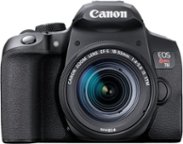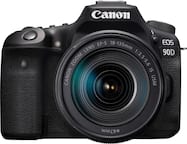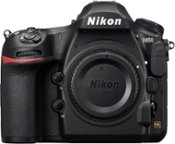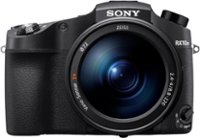How to Choose a Camera: The Ultimate Buying Guide
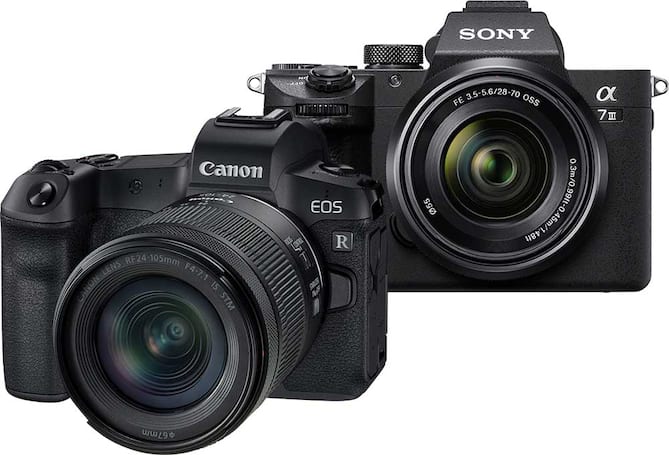
Best Selling Products
- Clearance$764.99Your price for this item is $764.99
- $1,599.99Your price for this item is $1,599.99
- $2,199.99Your price for this item is $2,199.99$2,799.99The previous price for this item was $2,799.99
- $1,699.99Your price for this item is $1,699.99
Learn what to look for in photographic equipment.
Types of cameras.
The most common camera types are:
- Digital single-lens reflex (DSLR): DSLR cameras use a single lens to frame, focus and take photos. This makes them a popular choice among both amateur and professional photographers. They comprise two key parts: the body and the lens. With large sensors, DSLR cameras offer better low-light captures and a good background effect, also known as a bokeh. Entry-level models are also budget-friendly. Plus, their large size offers good ergonomics and interchangeable lenses make them more versatile.
- Mirrorless cameras: These cameras are light, compact and allow fast video shooting. With no mirror, DSLR cameras offer better image stabilization and less shaky photos. Mirrorless cameras either have fixed or interchangeable lenses. Most come with APS-C or full-frame sensors. With fewer moving parts, mirrorless models are quiet and discreet.
- Compact (point-and-shoot) cameras: Compact cameras come in lightweight builds for increased portability. Their small dimensions ensure they easily fit in your bag or pocket. Point-and-shoot cameras have fixed lenses and are easy to use.
- Bridge cameras: Bridge cameras are smaller than DSLRs and larger than compact camera models. They often have a high-magnification zoom lens and manual controls. Bridge cameras come with small image sensors and an electronic viewfinder (EVF) rather than an optical viewfinder (OVF).
- Action cameras: Action cameras are small, rugged and waterproof cameras that often have video capture as their primary focus. Do you need to capture footage when enjoying outdoor recreation activities? Mount an action camera on your headgear or body to provide a unique first-person perspective. Most of these models feature a unique "fisheye" angle of view.
Consider image quality.
It may be difficult to judge the quality of images that cameras, camcorders and drones produce without taking actual photos and videos yourself. Since image quality largely depends on the camera's lens, deciding which type of lens a potential model has is a key factor to consider.
Many DSLR and mirrorless cameras come with kit lenses. Kit lenses have midrange zoom capability and slow variable apertures. These lenses are a good place to start for amateur or hobby photographers. However, investing in camera accessories, such as a prime lens and better quality zoom lens, will enhance your photography experience.
Type of lens.
Size and ergonomics.
Sensor size.
Digital cameras use sensors to record images. Larger sensors provide better image quality in low-light conditions. Wide sensors also increase the ability to blur backgrounds. The three most common types of sensors are:
- 1 inch or smaller: Mostly found in budget compact cameras
- APS-C: Advanced compact cameras, mirrorless cameras and DSLRs have this type of sensor
- Full frame: Also found in advanced compact, DSLR and mirrorless cameras
If you’re looking for a camera for professional use, opt for full-frame or advanced APS-C sensor cameras. APS-C sensors can multiply the focal length of your lens, which comes in handy when shooting distant subjects.
Speed and performance.
Resolution rating.
Video performance.
All modern digital cameras can shoot video footage. Some have high-end features, such as 4K Ultra HD resolution, while others have basic video capabilities. If video is your primary focus, the main specifications to consider are:
- Frame rates: 30fps and 24fps ratings are standard, while 60fps or higher is good for slow-motion footage
- Image stabilization: If you plan on not using a tripod, consider in-body and in-lens image stabilization
- 4K video feature: This improves image quality, especially when replayed on a 4K Ultra HD TV
- External microphone inputs: External mics capture the best audio
- Recording duration limits: This determines how much footage you can record at one time
- Rotatable LCD: Reduces neck strain and allows you to film yourself easily
- HDMI output: Helps record to external capture devices with a HDMI cable
Other features to look out for include battery life, manual shooting modes, auto modes, high ISO performance, memory slots, wireless connectivity and touchscreens.
This camera buying guide highlights all you need to know when choosing a new camera so that you can enjoy your photography and videography experience.
